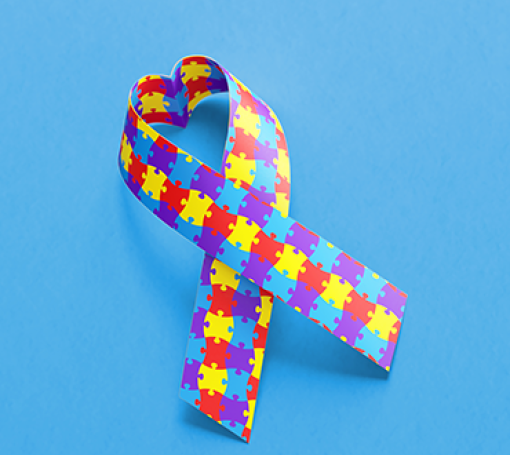Toddler big feelings can be overwhelming to witness and tricky to manage! The four-alarm-fire meltdowns can happen over a lost treasure, wet socks from splashing too hard in the creek and flooding their rain boots, or a sibling that knocked over a block tower. None of those things seem worthy of lying on the sidewalk sobbing to an adult. But what doesn’t feel like a big deal to us may be a really big deal in their lives. There are things that you can do as a parent to help them cope with the big emotions they don’t know what to do with. Below are 6 strategies to help children learn and express their emotions.
1. Help them name their feelings.
When your child is acting out, give them the words they don’t yet have for what’s going on inside: “You are really angry!”, “You are disappointed!”, “You’re feeling sad.”, or “You don’t like this.” This can help them identify their feelings as they learn to communicate their emotions.
2. Validate that their feelings are real.
When children feel understood, they often don’t need to show you in such a big way. This allows the hard feelings to dissipate faster. An example of validating their feelings might be, “Something about this doesn’t feel right to you. I believe you. You can play with the other kids when you’re ready.” or “I understand it’s annoying when your brother knocks down your blocks. You feel furious with him!”
3. Use creativity to explain emotions.
Art isn’t one of my strong suits but it’s a great way to connect with children. Somehow, even when children are only 1 or 2 years old, seeing something on paper can help them understand it better. You can draw for them, “This is a picture of you feeling sad, see the tears?” or you can let them draw, “Quick, here’s a crayon, draw a picture to show me how angry you are! Oh, wow, those are really thick, angry scribbles. I see your anger even poked a hole in the paper. What a big feeling!”
Another way drawings can help is when reinforcing and visualizing a schedule. For example, try drawing out their bedtime routine and hanging it on the wall. Even though they know the general routine, it helps when they see it written down. Transitions are often easier when kids feel prepared for what happens next.
4. Give them opportunities to take control.
If you’re dealing with a lot of power struggles, try to figure out where you can give your child a bit of control. Can you let them choose their own clothes? Put on their shoes – even if they’re on the wrong feet? A good game to play is the “Kid in Charge” game. Tell the child, “For the next 10 minutes, you’re the boss of me! I won’t do anything gross or unsafe, but otherwise I have to do what you tell me. Gosh, it’s so warm in here, I sure hope you don’t tell me to wear a sweater for the whole 10 minutes. I sure hope you don’t tell me to hop on one foot, that sounds really hard!” Giving your child just a few minutes of control can help them feel more open to receiving direction the next time you ask them to do something.
5. Provide individual attention.
Special, one-on-one time can make a big difference in filling up a child’s emotional cup. You’re probably already spending a bunch of solo time with your child. However, if you label the time as special, it means more to them.
For example, put up a sign on the door that tells the rest of the family you’re doing special “Mama and Theo Time”. Set the timer for 10 minutes and tell your child, “You’re really important to me, so I want to make sure the next 10 minutes are just for us. I’m going to put my phone away so it doesn’t interrupt our time. What do you want to do while we have this time? Draw? Drive cars? Play pretend?” When the timer rings, thank your child for spending time with you. If they’re upset about the time being done, remind them that you will have more scheduled time tomorrow (or later this week) that’s just for them that you’re also looking forward to.
6. Use play and imagination when you can.
Sometimes toddlers do things that they believe are funny but are in fact dangerous. It may feel difficult to explain lessons in safety. Pretend play together is a great way to help them comprehend these more complex topics.
For example, your toddler may run toward the street and ignore you when you call them back because they think it’s a game. Teach them that this is not okay by playing a game together with their toy trains. Name two trains Daddy Train and Baby Train. Have Baby Train run along the track while Daddy Train calls them back. Let your child be the Daddy Train teaching the Baby Train not to run away.
Another example might include having your preschooler sent home with a note that she tried to bite her classmate. Use dolls to roll play different ways of responding to conflict other than biting.
If the options above aren’t working and you would like individualized virtual parent coaching, consider scheduling a virtual Behavioral Health consultation with your child’s Primary Care Provider.
Helpful Resources
There are many resources available to help parents through the various stages of childhood development. Visit our Parent and Family Support Options list for local support groups in our community. Below are a few I love for toddler behaviors:
- Book:
- How to Talk So Little Kids Will Listen by Joanna Faber and Julie King – Tools to put in your toolkit for communicating with your child and different settings in which you would put those tools to work.
- Picture Books:
- The Rabbit Listened by Cory Doerrfeld
- When Sadness Is at Your Door by Eva Eland
- Podcast:
- Good Inside With Dr. Becky – I love that I can listen to an episode on a commute to work and there’s almost always an actionable, doable thing I can try with my kids that week. Toddler episodes: How to End Power Struggles (47) Are Tantrums Normal? (2) Yes, One-Year-Olds have Tantrums (31)
- Instagram:
- @BigLittleFeelings – a parent coach and child therapist post strategies for managing toddler/preschooler emotions.
Dr. Erica Cannell is a pediatrician at the Allegro Pediatrics Redmond Ridge location.
Keep Reading
View All Posts
Constipation
Constipation is common in children. Learn what is considered healthy and what you should do if you believe your child may be constipated.

Autism Acceptance
April is Autism Acceptance Month. Lauren Frishholz, Nurse Practitioner at Allegro Pediatrics, offers helpful information for families of children with an autism diagnosis.

Children & Nutrition
Dr. Eva Taylor answers some of the most common questions about children and nutrition.

